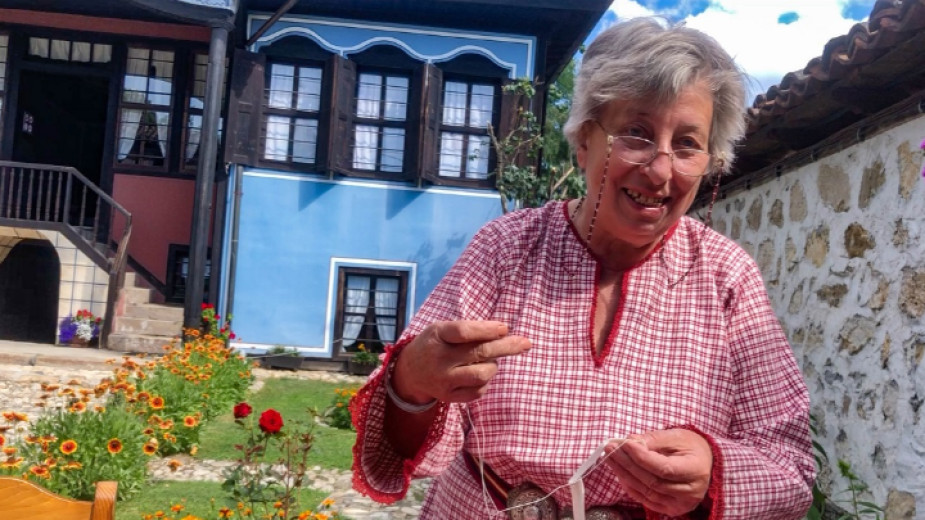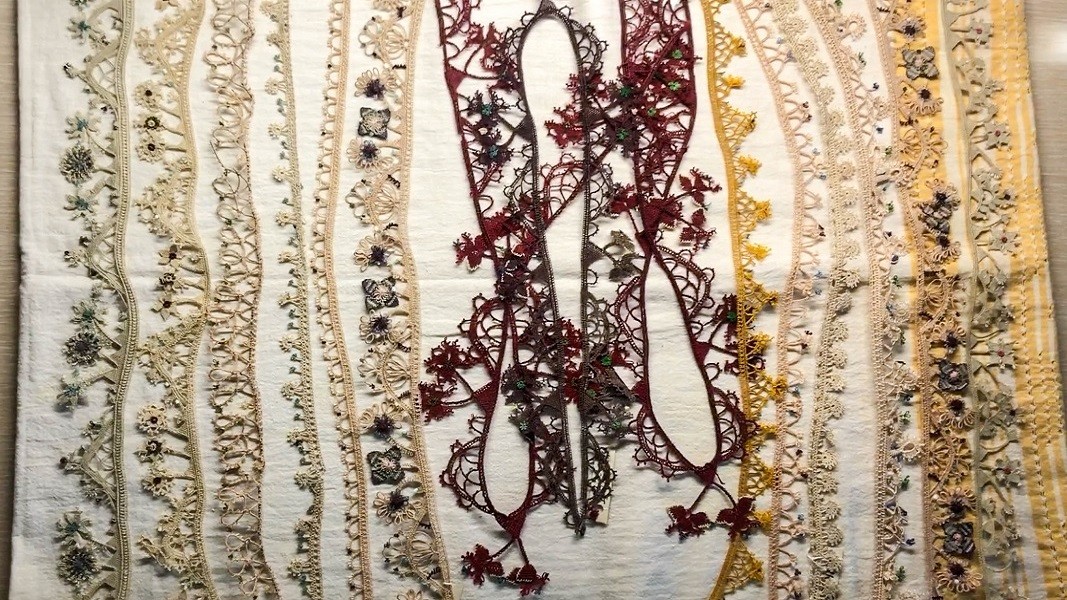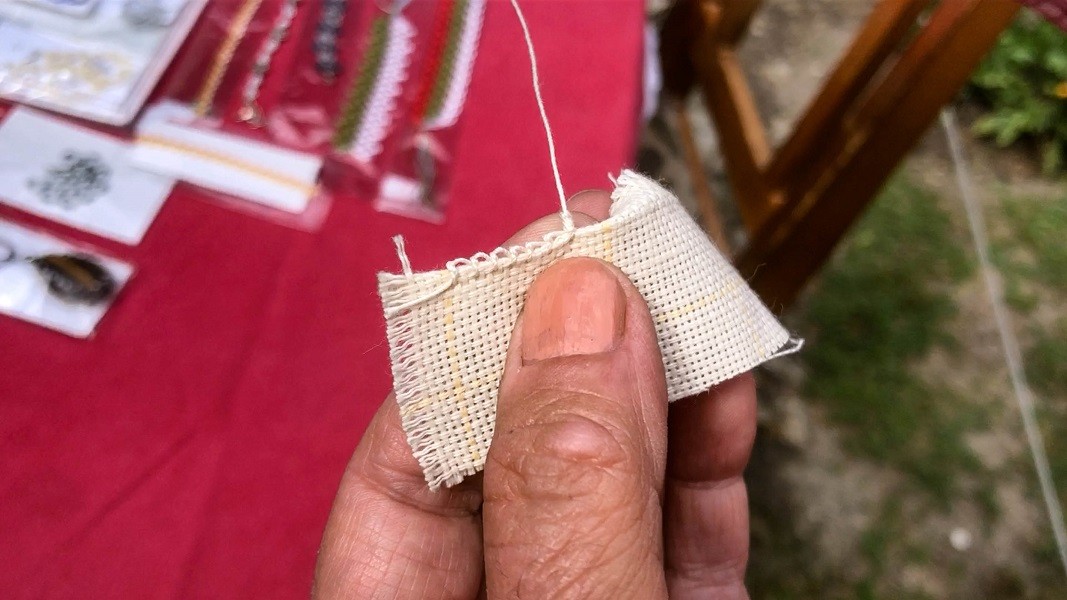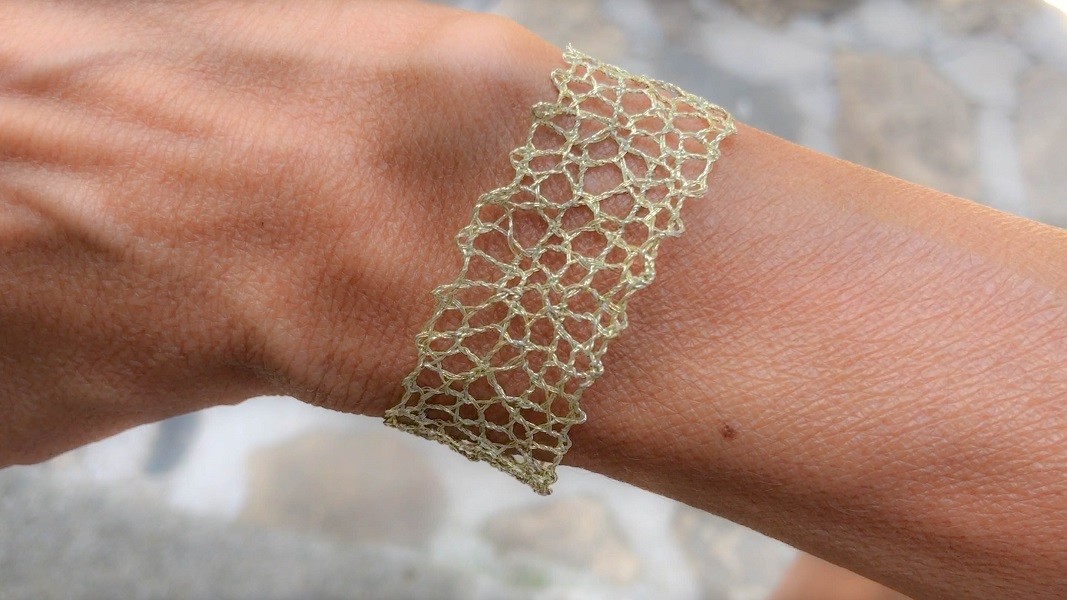
Translucent, delicate, made out of fantasy and love – the lace from the town of Koprivshtitsa, with its intricate ornamentation, used to be an element of all traditional clothing and household fabrics in the town. Once, the women of Koprivshtitsa would put their heart into the creation of a whole magical world made out of string. They would create geometric figures, wondrous flowers, birds, animals. In our day, this is an art that is dying out.
Yordanka Nikolova is one of the few women left who have continued the tradition into the present day. We meet with her at the Lyutov house in Koprivshtitsa, where the ground floor houses an exposition of authentic local fabrics, including the beautiful lacework of Koprivshtitsa. The house’s garden is used for demonstrations of traditional local crafts. In this instance, Yordanka is showing tourists an old crocheting method using shuttles, and how to make knots.

This technology was brought here from Europe. But a different kind of lace is more widespread in the country – needlepoint lace, also known as kene, she says.
The women of Koprivshtitsa used to sew, not crochet the lace they made, and they used a common or garden needle and… horsehair, which they used as lace ground, sewing onto it using silk thread. This is a method that has deep roots going back in time, and it probably came from the Far East. It is popular in other parts of the country as well, but the women of Koprivshitsa once had the reputation of the best kene-makers in the land.
“In Koprivshitsa each formal shirt had kene lace on the neckline and the sleeves. It is made out of horsehair, very tight, very dense, not loose as with the other kinds of lace, and with lots of floral elements, lots of flowers,” Yordanka Nikolova says. Each figure has a name – in Koprivshtitsa people have one name for it, in Ihtiman – another. But what I have heard from older people is that women made the ground for the kene, which is a horsehair mesh with little holes in it. And then other women, who were better at the craft, would make the more delicate, pretty but difficult elements – the delicate geometric shapes or flower petals, twigs etc.”

With shuttle lace, women would follow a certain model, but with kene it was up to the master craftswomen to choose how to ornament the lace – with a sure eye, a steady hand and lots of patience. Sometimes they would use colour thread to embroider additional ornaments edged with beads.
“Kene is all about the imagination of the woman making it. It reflects her feelings, her views. Silk thread was used, and they processed the silk too – boiling it to make it softer, then dyeing it green, purple, violet… We findkene lace on the visible elements of the formal dress people wore to go and dance the horo in the village square, or to celebrations. It was a lot of hard work,” Yordanka says.

She is a member of a group of women who want to revive the forgotten Bulgarian crafts and to transport them into the future. And she says more and more young people have been asking her, and the other members of the group, to teach them how to make traditional kene lace.
Watch Yordanka Nikolova demonstrate how to make kene lace in front of the Lyutov house in Koprivshtitsa:
Photos: Veneta Nikolova
The fourth national Biennial of Illustrations opens today in the triangular tower of Serdica, part of the Regional Museum of History in Sofia. As during its previous editions, the biennial is not themed. “The aim is to enable the authors to..
“A story that is worthy of a movie” is what we often say when we hear about some incredible event or an interesting story. It is cinema that seems to help today's digitally dependent person, for whom the magical worlds of paper books..
After the success of the "We are the children of the river" festival in September, a civic foundation is once again collaborating with the Plovdiv City Centre Municipality. This time they have organised an exhibition of the same name, featuring..
"Bulgarians decorate the world," tells us Emilia Juеcker, who has been living in Germany for decades. The diversity of our cultural traditions,..
The second edition of the Festival of Bulgarians and Descendants of Bulgarians in Argentina will be held on November 30 at the San Juan Bosco School in..
The Bogdan Khmelnitsky Melitopol State Pedagogical University, together with the Shumen University "Bishop Konstantin Preslavsky",..

+359 2 9336 661
